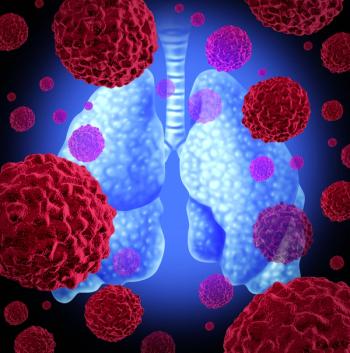
Black, Hispanic Patients with Lung Cancer Less Likely to Undergo PET/CT Imaging
According to researchers, black and Hispanic patients are less likely to undergo guideline recommended PET/CT imaging at NSCLC diagnosis, which could partially explain differences in survival.
According to a study published in the JNCI: Journal of the National Cancer Institute, black and Hispanic patients are less likely to undergo guideline recommended PET/CT imaging at non-small cell lung cancer (NSCLC) diagnosis, which could partially explain previously observed differences in survival.1
The researchers indicated that further awareness of this issue would allow for future interventions aimed at alleviating this disparity.
“If African Americans and Hispanics aren’t getting the best imaging, this could be a piece of the puzzle explaining why these patients with lung cancer tend to have worse outcomes than white patients,” Rustain Morgan, MD, University of Colorado Cancer Center Investigator and assistant professor in the School of Medicine Department of Radiology, said in a press release.2 “Now that we know more about this problem, we must find ways to address it.”
Using the linked Surveillance, Epidemiology, and End Results – Medicare database between 2007 and 2015, the researchers compared initial imaging modality between 28,881 non-Hispanic white, 3,123 black, and 1,907 Hispanic patients age ≥66 years who were enrolled in Medicare fee-for-service and diagnosed with NSCLC. The primary outcome was comparison of PET/CT utilization between groups and a secondary outcome was 12-month cancer specific survival. Information on stage, treatment, and treatment facility were also included in the analysis.
After adjusting for demographic, community, and facility characteristics, black patients were found to be less likely to undergo PET/CT imaging at diagnosis compared to non-Hispanic white patients (odds ratio [OR], 0.54; 95% CI, 0.50-0.59; P < 0.001). Hispanic patients were also less likely to receive PET/CT imaging (OR, 0.72; 95% CI, 0.65-0.81; P < 0.001). Moreover, PET/CT was correlated with improved survival (hazard ratio [HR], 0.61; 95% CI, 0.57-0.65; P < 0.001).
In addition to racial and ethnic disparities identified in the study, differences in PET/CT use were also found based on the type of treatment facility. For example, patients treated at NCI-designated cancer centers were more likely than those treated at teaching hospitals and especially those treated at community centers to receive PET-CT imaging.
“Our study showed a couple things,” Morgan said. “First, it reaffirmed that patients who are imaged with PET-CT at diagnosis have better cancer-specific survival. Second, it showed there is a significant difference in who gets the recommended PET/CT at diagnosis. And third, it leads to more questions, like what is driving this difference and are these disparities in adherence to imaging guidelines present in other cancers.”
The researchers identified a couple of possible explanations for the disparities found in the study. First, PET/CT machines are relatively specialized and expensive, and not all hospitals have the capacity to offer this sort of imaging. However, another potentially even more problematic factor identified could be unconscious bias as a driver of the differences presented.
Morgan suggested that future studies already planned hope to answer some of the questions presented by this research. For example, the researcher indicated that he is already working with University of Colorado colleagues to plan a project assessing the financial cost of inappropriate cancer staging. Additionally, now that these disparities are starting to become clearer, the researchers also hope to explore ways to ensure that all NSCLC patients are able to receive the recommended imaging at the time of diagnosis.
References:
1. Morgan RL, Karam SD, Bradley CJ. Ethnic Disparities in PET/CT Utilization at Diagnosis of Non-Small Cell Lung Cancer. JNCI: Journal of the National Cancer Institute. doi:10.1093/jnci/djaa034.
2. African Americans, Hispanics less likely to receive recommended lung cancer imaging [news release]. University of Colorado Anschutz Medical Campus. Published March 11, 2020. eurekalert.org/pub_releases/2020-03/uoca-aah031120.php. Accessed March 24, 2020.
Newsletter
Stay up to date on recent advances in the multidisciplinary approach to cancer.






























































































